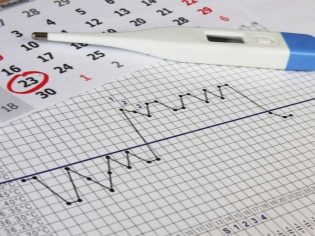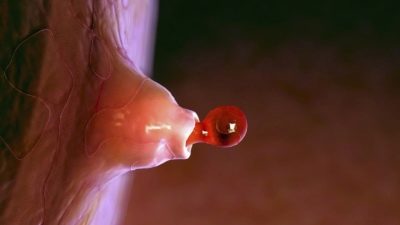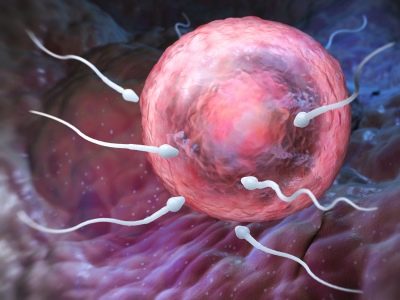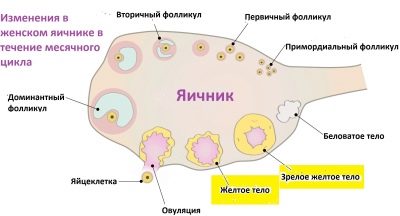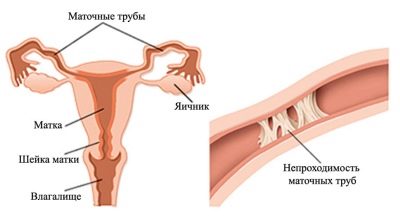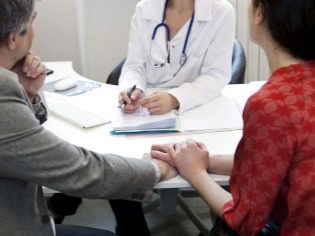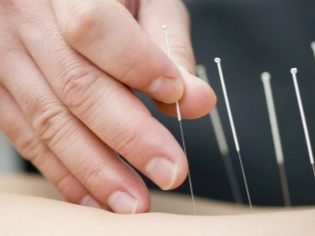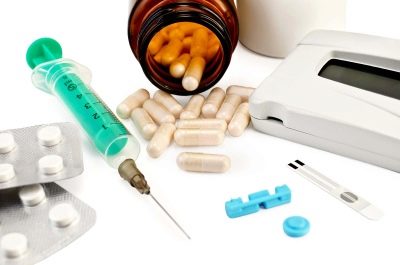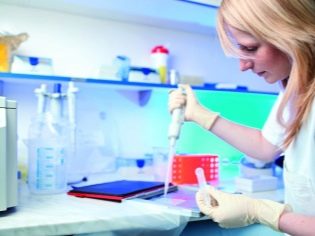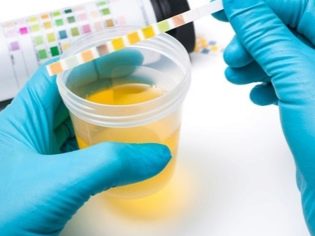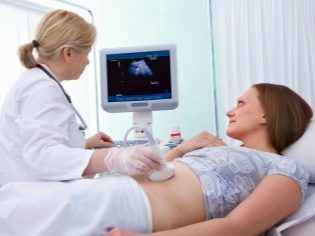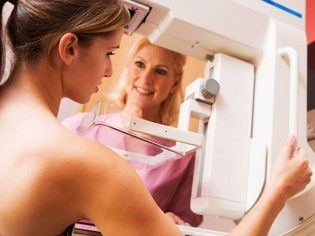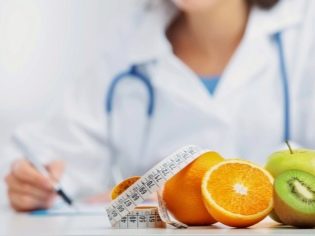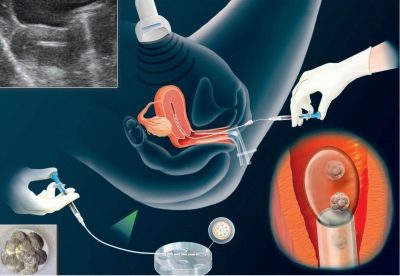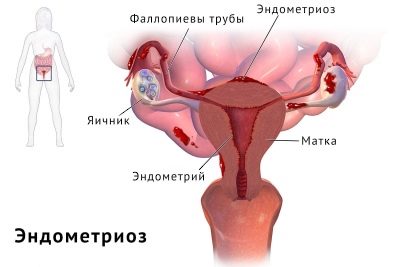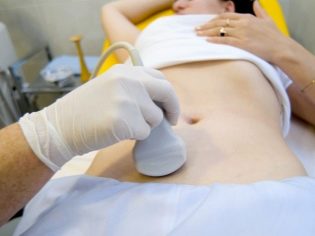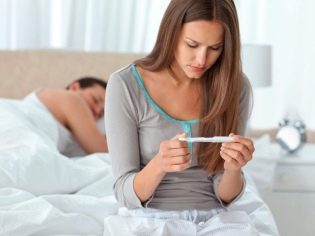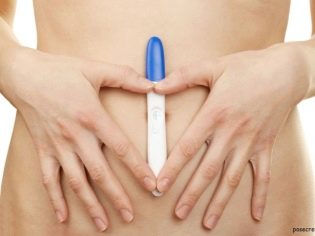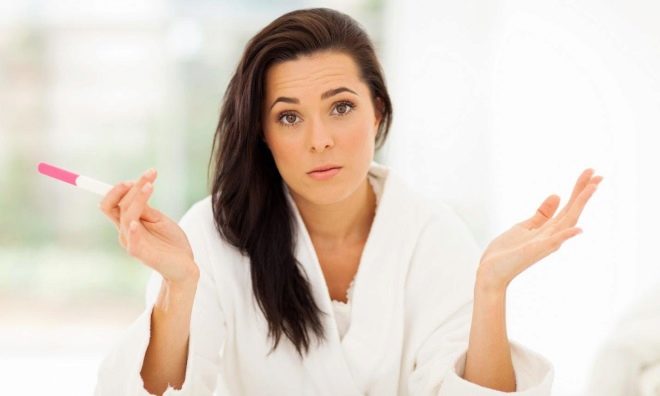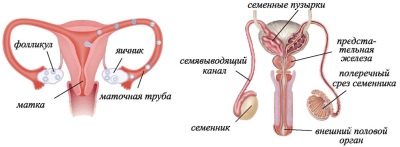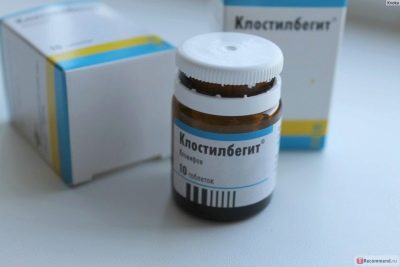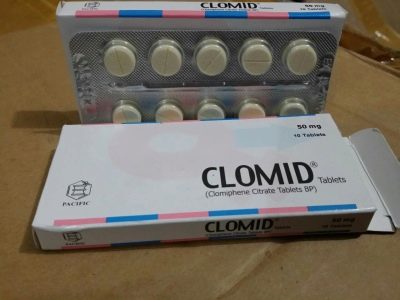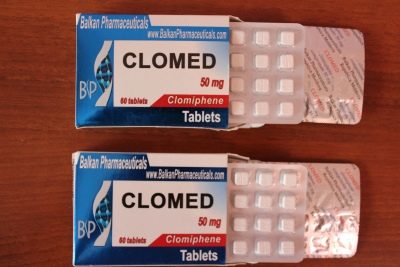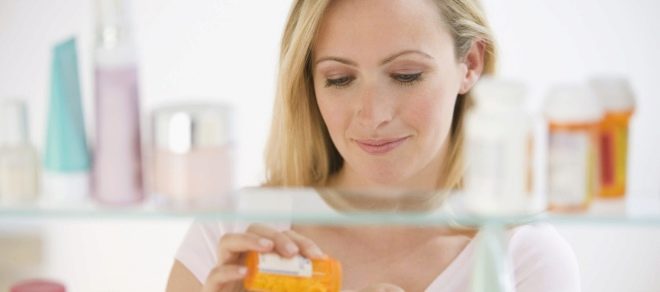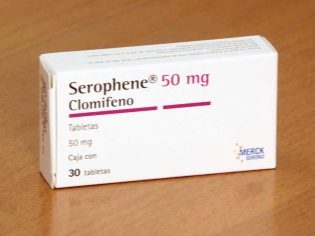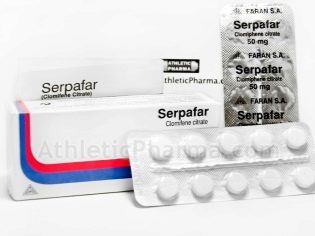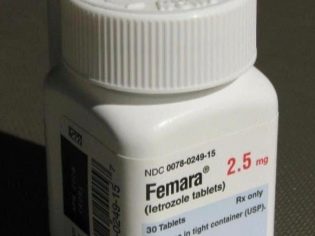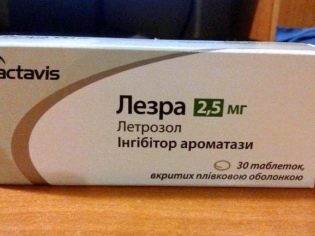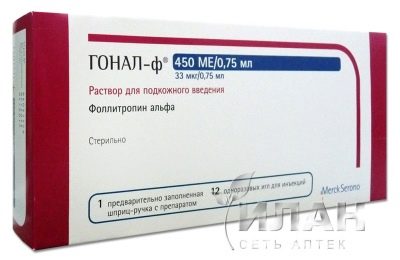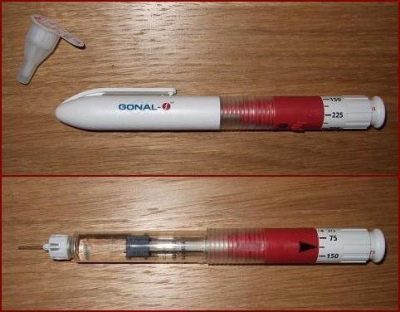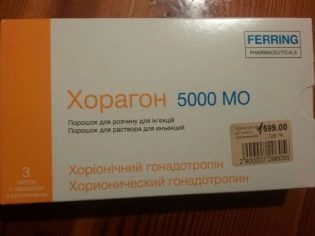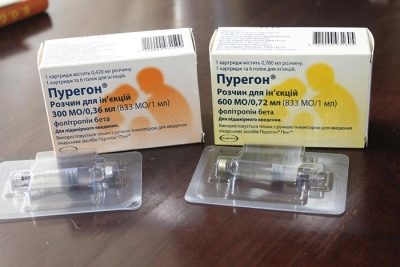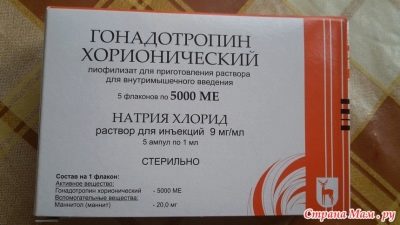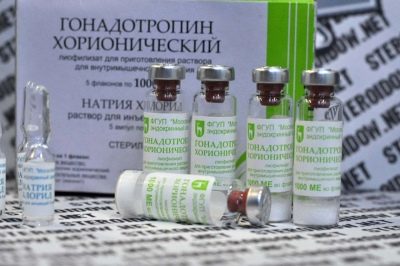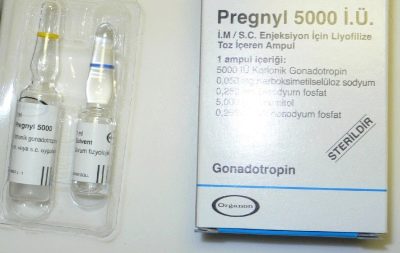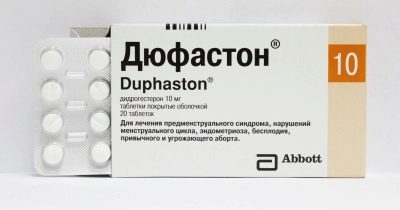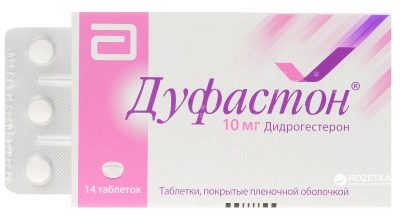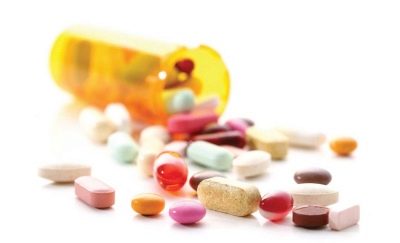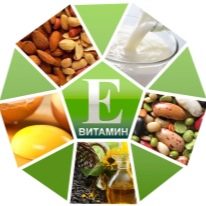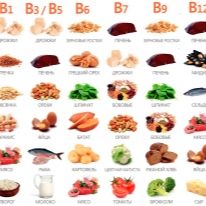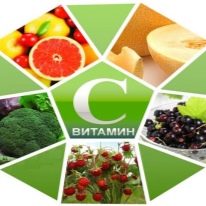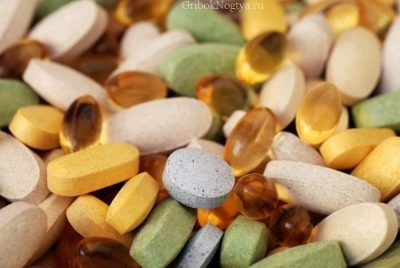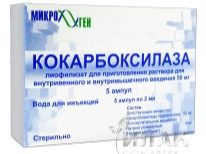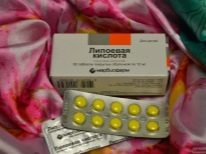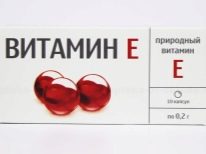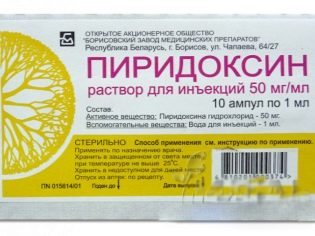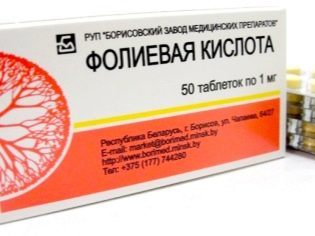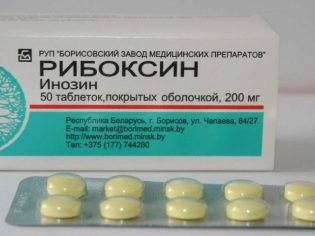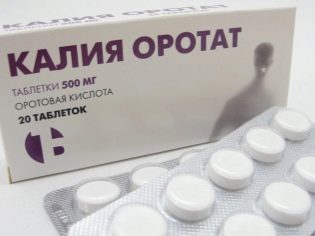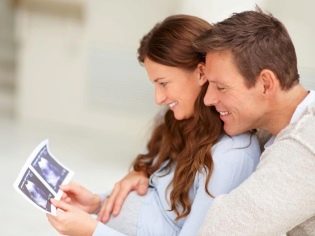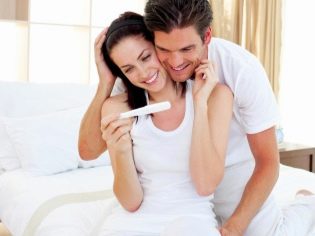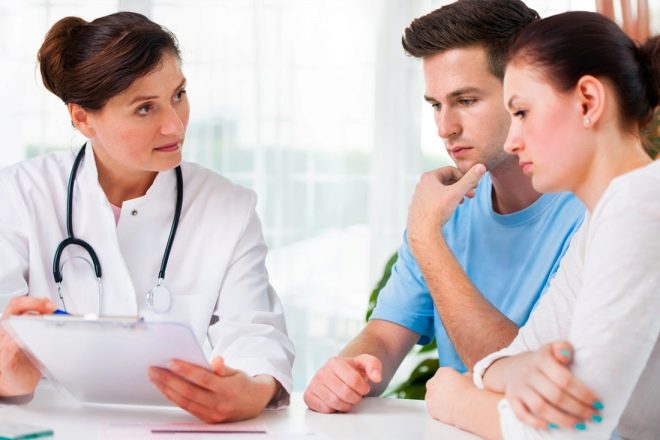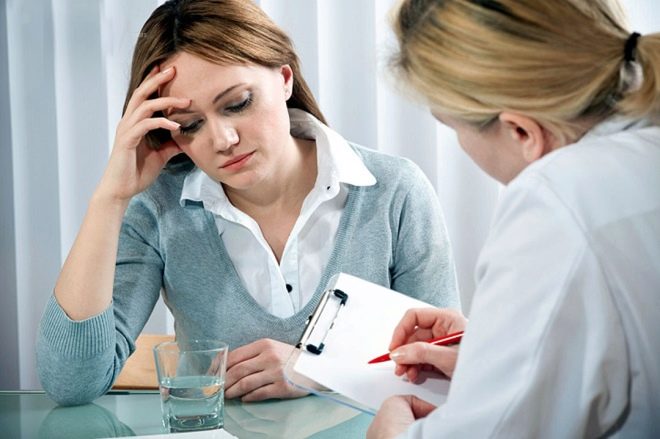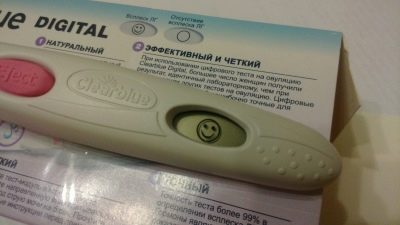Stimulation of ovulation for pregnancy planning: drugs and results
Stimulation of ovulation is considered the most common and popular way to achieve a long-awaited pregnancy. But he has his pros and cons.
We will tell you about how artificial stimulation of natural processes for women, what drugs are used and what results can be achieved, are described in this material.
What it is?
Every or almost every month an ovulation occurs in the body of a healthy woman capable of conceiving. After menstruation during the first half of the cycle, which lasts about 14 days, follicles mature in the ovaries. One of them, dominant, bursts in the middle of the cycle and releases an egg ready for fertilization.
Ovulation and subsequent periods are usually divided by 14 days. If the cycle lasts 28 days, then ovulation should be expected on the 14th day of the cycle.If the individual characteristics are such that the cycle has a duration of 30 days, then ovulation occurs on the 16th day, with a cycle of 32 days, ovulation usually occurs on the 18th day.
But this is ideal, but in practice small deviations from the rules are permissible.
The release of the egg occurs within one hour, then for another day it retains the ability to fertilize and waits for the spermatozoid in the fallopian tube. Conception is possible only during the period of ovulation.After all, the process of release of the egg is regulated by the pituitary gland, which begins to produce luteinating and follicle-stimulating hormones.
Under the action of FGS (a hormone that stimulates the growth of follicles) in the first half of the cycle an increase in the follicle occurs, and under the action of luteinizing hormone (LH), the egg cell inside it can be matured in a relatively short time.
After the release of the egg slowly moves through the tube in the direction of the uterine cavity. If fertilization occurs, then the embryo is already lowered into the uterus.and if conception did not happen, then the egg also descends into the uterus and dies there during the day.
As a result of hormonal failure, ovarian dysfunction, and for a number of other reasons, the cycle envisaged by nature can be disturbed, and therefore women can have anovulatory cycles, that is, cycles without ovulation.
These can be cycles when the egg does not mature, or it matures, but does not leave the follicle. In this case, a woman cannot become pregnant naturally.
Doctors come to the rescue, who can stimulate the ovaries to plan pregnancy. Most often this is done with the help of hormone therapy.
Stimulation of ovulation gives a real chance to conceive to couples who have not been able to get pregnant for a long time. The procedure is categorized as assisted reproductive technology.
Indications - for whom it is held?
This method annually helps tens of thousands of women to gain the joy of motherhood. Primarily, stimulation is indicated for women with polycystic ovaries, with various manifestations of their dysfunction, including age. Medical artificial stimulation of ovulation usually not for women after 40 years.
With complaints about the inability to get pregnant, a woman turns to a gynecologist. The doctor studies not only the state of her reproductive organs, but also the peculiarities of the menstrual cycle. Such diagnostics include the mandatory monitoring of follicle maturation using ultrasound diagnostics.
If this examination indicates that ovulation does not occur, preparation for stimulation begins.
The main indication for drug-induced stimulation of the ovaries is the absence of pregnancy for a year, provided that the spouses are not protected and live a regular sex life. If the spouses (especially women) are already 35 years old or more, then the waiting period for conception naturally decreases to six months.
The procedure is contraindicated for women suffering from obstruction of the fallopian tubes.: Otherwise, an ectopic pregnancy may occur. Also stimulation is not carried out in patients with inflammatory processes in the ovaries and other organs of the pelvis.
Another indication for stimulation is the absence of menstruation, which arose against the background of hypothalamic-pituitary insufficiency.
The reason for the procedure can be a preparation for IVF or intrauterine insemination - insemination. Doctors usually quite successfully manage to stimulate the work of multifollicular ovaries, there are also schemes for stimulating endometriosis.
When hormonal disruptions, when ovulation is often "late", stimulates late ovulation.
Also procedure is indicated for women with significant metabolic disorderswhich is manifested by obesity or, on the contrary, by underweight, because under these conditions it is often impossible to get pregnant with a couple on their own.
Artificial stimulation techniques
There are quite a few methods by which you can support ovarian function and help accomplish ovulation.
In addition to drugs, pills and injections as part of hormone therapy, which is used to restore the ovaries and provoke the release of an egg from a mature follicle, popular remedies that women practice at home are widespread. These are herbs, mud therapy, vitamin therapy and some physiotherapeutic procedures, for example, acupuncture.
Some even practice yoga for conception. Some asanas (poses), according to women, well complement the complex treatment and contribute to the improvement of the whole organism in general and the reproductive system in particular.
Despite the huge number of recommendations and ways to achieve the desired, the main method with proven effectiveness, in which the effect is less due to the usual successful coincidence of circumstances, is considered a drug hormonal stimulation.
How is the drug stimulation, preparation
After a woman visits a doctor, she and her partner are advised to undergo a detailed examination to determine the true cause of family infertility. A woman is assigned a full range of laboratory tests from general and detailed blood and urine tests to blood tests for infections, including sexually transmitted infections.
Be sure to do a blood test for hormones (lutenizing, follicle-stimulating, progesterone, prolactin and a number of others, if the doctor deems it necessary).
A woman mandatory conduct ultrasound of the pelvic organs and mammary glands. Sometimes it may be necessary to perform laparoscopic diagnostics to make sure that the fallopian tubes are passable.
A woman’s sexual partner performs blood tests for infectious diseases, genital infections., and spermogram passes to determine the quality of its germ cells, because with male infertility, all without exception schemes for stimulating ovulation will not give any result.
If you suspect pathology inside the uterus is hysteroscopy.
As soon as the first stage, diagnostic, will be left behind, the second stage begins - the treatment of existing inflammatory diseases and hormonal imbalance. Sometimes at this stage a woman manages to become pregnant.Since the pathologies that caused her to fail in the ovulatory cycle, in most cases, it can be treated.
Women with overweight or deficiency (weight less than 45 kilograms) are prescribed a course of body weight correction. According to the observations of specialists, sometimes it is enough for the patient to reduce her weight only by 10% in order for ovulation to begin to occur independently.
The third stage is the stimulation itself. Schemes of ovulation stimulation protocols may vary. The doctor determines the specific drug, its dosage, duration and frequency of admission on an individual basis, taking into account the patient's age, weight and gynecological history.
Sometimes the turn of hormones does not reach. Pregnancy occurs before the third stage in the event that a woman manages to completely reconsider her attitude to unsuccessful attempts to get pregnant. Fear, anxiety, feelings, disappointment, disappointment on the psycho-physical level trigger the blockage of estrogen production, therefore ovulation does not occur.
If a woman learns to treat failures correctly, to perceive them as a temporary phenomenon and extremely harmful to her health, the ovulatory cycle is often restored without drugs at all.
At the initial stage, doctors try to prepare the endometrium of the uterus. With a thin endometrium, conception, even if it happens, may not lead to pregnancy, because the embryo will find it difficult to consolidate in the uterine cavity. To prepare, conduct a course of treatment with female sex hormones. - “Proginova”, the external drug “Divigel” and other drugs that contain hormones estrogen and progesterone are used.
As a rule, from the 5th day of the cycle, special preparations are prescribed; at the same time, doctors monitor the follicle maturation by ultrasound.
Activities should begin immediately after the end of menstruation.
It is possible that a woman will have to go to the ultrasound room with the 10th day of the menstrual cycle daily. As soon as one of the follicles reaches a size of 17-18 mm, stimulation can be performed. and after 24-36 hours, expect the onset of the cherished moment - ovulation itself.
Still in preparation a woman must donate blood for hormonal analysis in order to identify the level of AMH - Antimulir hormone, which is "produced" by the growing structures of the follicles.
If the woman’s own AMH level is low, the response of the ovaries to stimulation will be weak, and the protocol’s performance will be significantly reduced. The level of this hormone during the examination in the dynamics will also allow doctors to see the effectiveness of stimulation and prevent excessive hyperstimulation.
It is possible to stimulate the ovaries up to three times in a row., that is, for three cycles. If conception does not occur, a break is required so that the ovaries can rest from the “hormonal attack” and recover. During this time, the man and the woman visit the doctor again, who can make adjustments to the treatment regimen.
In total, 5-6 cycles with stimulation are considered permissible.. If they have not brought results, the method is considered ineffective for this pair., they are recommended other assisted reproductive techniques, including surrogate motherhood, removal of mature healthy eggs from the ovaries, followed by in vitro fertilization, fertilization of the donor egg sperm of the husband, etc.It all depends on the true causes of infertility and whether a woman produces her own healthy sex cells.
To insist on continued stimulation of ovulation is not worth it, after 5-6 courses there is a high probability of irreversible depletion of the ovaries, their premature aging.
To stimulate ovulation do not need to go to the gynecological hospital. A woman can be at home, in the usual conditions for her. She must adhere to the prescribed schedule of visits to the doctor to monitor the ultrasound, and take all prescribed drugs in full accordance with the specified individual dosage.
Preparations - list
All drugs that are included in the scheme of protocols of stimulation of ovulation, are divided into two large groups:
- follicle growth stimulants;
- triggers ovulation.
The first ones are prescribed from the 5th day of the cycle (immediately after the menstrual period), and the triggers are injected once - when the ultrasound shows that the follicle is fully ready to release an egg. They mimic the release of luteinizing hormone, under the action of which the egg quickly matures and leaves the follicle.
After ovulation has taken place, medications are prescribed that help the ovaries support the function of the corpus luteum.so that the pregnancy, if it has arrived, can develop normally. Let's look at the preparations of all these groups in more detail.
“Clostilbegit (Clomiphene Citrate, Clomid)
This drug is widely known to women who are planning a pregnancy because it has proven itself as a means of stimulating the ovulatory process. The medicine stimulates the formation and growth of follicles in the ovaries.
In certain doses, it helps the production of follicle-stimulating hormone FSH, lutenizing hormone (LH) and gonadotrophins. The tool is available in the form of tablets.
There are no general recommendations on the dosage regimen of the remedy, because the dosage depends on how the ovaries react to the use of this medication - it can be reduced or increased at the discretion of the attending physician.
If a woman’s menstruation occurs fairly regularly, there are no long-lasting failures, then Clomid treatment begins on the 5th day of the cycle (count from the first day of menstruation). According to one of the common schemes, the drug is taken every day for five days, in this case, ovulation is expected from 11 to 15 days of the cycle.
If there is no ovulation, then in the next cycle another scheme is introduced, in which the drug must be taken from the 5th day of the cycle for 5 days, but in double dosage.
If both schemes do not show a result, the treatment is interrupted for three months, after which the course may be repeated..
For each course a woman should not take more than 750 mg of the drug. After the second course, if he did not bring the long-awaited result, treatment with Clomid is recognized as completely ineffective and other methods of assisted reproductive plan are chosen.
Side effects of the drug can give a woman discomfort.. These are nausea, vomiting, flatulence, headache, increased drowsiness, slowness of movements and mental reactions, so for the time of treatment a woman is recommended to give up driving and work associated with high risks to life.
Many women during the reception of Clomid notice that they are overwhelmed by a depressive mood, their sleep and appetite are disturbed. Abdominal pain, slight pain in the chest, white liquid discharge from the genitals may appear.
"Clostilbegit", as well as other drugs that stimulate follicular growth, increase the risk of subsequent occurrence of multiple pregnancy. Many women note that they are becoming somewhat stout with the treatment.
Analogues of this tool are "Clomiphene", "Serofen", "Serpafar".
Letrozole
This nonsteroid drug is also strengthens the production of FSH and contributes to the onset of ovulationhowever, experts consider it to be more effective than Clomiphen, although Clomifen remains the first choice.
Letrozole has significantly fewer side effects., thanks to which it is more pleasant to take it. In addition to the regulation of hormones, the drug improves the condition of the endometrium. There are also several schemes by which this agent can be taken in pills.
In the first case, 2.5 mg is prescribed from the third day of the cycle for five days; in the second scheme, a woman is recommended to drink the drug from the fifth day of the cycle at a dose of 5 mg.
The best results are shown by the use of this agent as part of complex therapy: on the second to sixth day of the cycle, “Letrozole” is prescribed at a dosage of 2.5 or 5 mg per day, then from 7 to 10 days of the cycle, FSH is administered to the woman at injections, and then an injection of hCG at a dosage of 10,000 U, once the dominant follicle reaches the desired size by ultrasound (from 18 mm).
Analogues of the drug - "Letrosan", "Femara."
"Gonal-F"
This drug also belongs in the group of remedies stimulating the growth and development of follicles in the ovaries in the first half of the menstrual cycle. It consists of a recombinant hormone, which, thanks to the efforts of genetic engineers, obtained Chinese hamsters from ovarian cells.
The drug is injected subcutaneously, it is sold in special convenient for use syringe pens. “Gonal-F” is prescribed in the event that stimulation with the drug “Clostilbegit”, which is the first in the order of appointment, turns out to be ineffective.
Such actions of this drug are typical for many hormonal drugs - these are headaches, dizziness, drowsiness and lethargy, lack of tone, vaginal dryness, changes in appetite, insomnia. Sometimes women notice diarrhea, temporary blurred vision, acne, weight gain.
The tool is injected subcutaneously. The doctor will give the first injection, and the subsequent woman will be able to prick herself. yourself at home.
The course of stimulation begins in the first days of the cycle and lasts up to 11-14 days. The dose is determined by the physician, usually starting at 75-10 IU and gradually increasing the dosage.
With each subsequent introduction, a woman needs to choose a new place for an injection, it is not necessary to give injections in one zone.
Analogues of the drug - "Horagon", "Ovitrel."
"Puregon"
This drug can also be used for the initial preparation of follicles in the first half of the cycle. It is produced in the form of a powder for preparing a solution for injection, in the form of a ready-to-use solution and a solution in cartridges. The fluid is injected intramuscularly and subcutaneously. The drug in the "pen" is administered in only one way - subcutaneously.
The preparation contains recombinant FSH from the same Chinese hamster, which in many ways outperforms FSH obtained from human urine. It is safer, easier to carry.
Under its influence in the ovaries of a woman, several follicles begin to grow actively, which can then be used in any of the assisted reproductive methods.
The dose depends on how the patient’s ovaries respond to the effects.. Daily monitoring of ultrasound and the definition of estrogen in the blood will help the doctor to be well aware of what exactly is happening in the sex glands of a woman, and not to miss the moment of ovulation.
The initial dose is 50 IU, then, if there is no ovarian response, the dosage is increased daily and controlled when the answer appears. They begin treatment from the second day of the menstrual cycle, it lasts about 7-14 days (it all depends on when it will be possible to achieve the growth of follicles and the increase in blood concentration of estradiol). Completes the stimulation of the injection of hCG at a dose suitable for the induction of ovulation (usually 10,000 IU).
"Chorionic gonadotropin" (hCG)
This drug is obtained from the urine of pregnant women, because this hormone is produced in large quantities in the initial period of gestation of the baby - most intensively up to 12 weeks.The injection of this drug in a dosage of 5,000 to 10,000 IU is used to ensure that the fact of ovulation occurs, so that the egg can leave the follicle stimulated in the first stage.
Then the drug can be administered every two days before the date of the expected monthly, in order to maintain the function of the corpus luteum, which produces the sex hormones necessary to maintain the pregnancy.
If the pregnancy is confirmed, hCG can also subsequently be used up to 10–11 weeks, if there is a threat of miscarriage due to the low level of hCG.
If a woman has a threat or fact of ovarian hyperstimulation on an ultrasound, they refrain from using hCG. It is also not recommended to use chorionic gonadotropin in women with pathologies of the kidneys and liver.
Among the side effects of the drug are irritability and mood swings, headaches, drowsiness. HCG also increases the chance of conceiving twins or triplets, and this fact cannot be ignored when planning a pregnancy.
Analogue of the drug - "Pregnil".
Didrogesterone ("Duphaston")
This is a popular hormonal drug, the main active ingredient of which is an analogue of progesterone. It can be indispensable in the second half of the menstrual cycle, as it helps to keep the pregnancy, contributes to proper implantation, regulates many processes, setting the woman's body to a new state for her.
On ovulation "Duphaston" has no effect, but here after it, it becomes very important because it strengthens the possible positive result of stimulation. The drug does not affect the growing embryo, and therefore its use in the first weeks and months of pregnancy is not prohibited, and sometimes recommended.
The dosage is prescribed individually depending on the result of the blood test for progesterone, as well as the purpose of the reception - tablets can be prescribed not only to control the level of the hormone, but also to prevent the threat of miscarriage, to prevent a missed abortionif such facts previously occurred.
Women do not grow fat from “Duphaston”, do not lose concentration, and therefore can continue to drive a car without restrictions while taking this drug.
Vitamins to stimulate ovulation
Vitamin preparations are included in the standard treatment regimens for female and male infertility. When ovulation is stimulated, taking vitamins is shown 1-2 months before the cycle selected for stimulation, as well as throughout the stimulation, and then until pregnancy is confirmed.
Sometimes in order to establish a regular ovulation, it is enough to adjust the lifestyle of a woman, her diet and prescribe her vitamins.Therefore, vitamin support at the planning stage of pregnancy is of great importance.
Especially important for the normalization of ovulatory cycles vitamins D, A, B12, B 9, E, C:
- Vitamins D and D 3 involved in the production of sex hormones in women.
- Without vitamin a follicle development is not costing, in addition, retinol is involved in the normalization of the composition of cervical mucus.
- Vitamin E participates in cellular processes, helps the maturation of the egg, contributes to its release beyond the follicle.
- Ascorbic Acid (Vitamin C) improves blood circulation, which contributes to the enrichment of the ovaries with beneficial substances.
- Vitamins of group B, especially folic acid, regulate the duration of the luteal phase of the cycle, as well as increase the viability of the egg.
To stimulate ovulation, vitamins are recommended to take as follows:
- From the beginning of menstruation to ovulation, vitamin E, vitamin A and folic acid.
- From the moment of ovulation throughout the second phase of the cycle - vitamin C, vitamins B, vitamin E.
Specific vitamin preparations should be prescribed by a doctor, taking into account the biochemical blood test, which shows which substances are necessary, and which without synthetic preparations is sufficient.
An example of a successful vitamin therapy regimen could be:
- From 1 to 14 day cycle - cocarboxylase + riboflavin (in injections) daily, as well as lipoic acid and vitamin E tablets and capsules.
- 15 to 24 day cycle - Ribboxin, pyridoxine, folic acid and potassium oratat in tablets, as well as vitamin E three times a day.
Treatment of folk remedies
Our ancestors knew something about women's health long before such notions as “stimulation of ovulation” appeared. However, experts are inclined to believe that probability theory plays an important role in non-traditional medicine - There is always a chance to conceive, and therefore it won't hurt to drink weeds.
Modern doctors with respect to folk remedies to improve women's health, but caution against their self-designation.
Any national treatment should be discussed with your doctor, so as not to harm.
For folk methods of increasing ovulatory capacity, there are also certain rules. For example, do not take herbs at the same time as hormone therapy with medicinesThis can lead to ovarian hyperstimulation.
Herbs and roots for female fertility do not take during menstruation, and to be treated by them for more than 3 months in a row, as well as hormonal medicines, is not recommended.
The principle of treatment in alternative medicine is exactly the same as in traditional. In the first half of the cycle, take herbal remedies that help the growth and development of the follicle. This is sage - decoctions and essential oil, decoction of rose petals, plantain seed infusion.
In the second half of the menstrual cycle, after ovulation, folk healers recommend taking boron uterus - This plant contains plant progesterone. From her make broths and infusions, according to the instructions for use, which is enclosed in pharmaceutical packaging with this herbal collection.
To achieve ovulation, a woman is advised not to take alcohol, not to abuse nicotine, to diversify her diet with products that best affect the ovaries. These are liver, lean red meat, sea fish, dairy products.
Performance
In the first cycle, when a woman stimulates ovulation, approximately 15% of couples can become pregnant.
During the second and third cycles, the number of positive outcomes, when ovulation can be restored, reaches 70-75%. In general, the effectiveness of drug induction of ovulation is estimated at 70-80%. It is this amount of couples that eventually helps to get pregnant naturally.
The rest come to the aid of IVF, ICSI and other assisted reproductive techniques and techniques.
Possible consequences and complications
Stimulation is carried out by hormonal drugs, to underestimate the impact of which on the female body would be wrong. The induction itself during the cycle often causes painful and unpleasant sensations in women. Many complain that they are pulling the lower abdomen and even that the ovaries hurt after stimulation. Almost everyone notes "hot flashes" - bouts of heat, which occur in waves.
One of the most dangerous effects of stimulation is superstimulation.in which the growth of follicles occurs so rapidly that develops overstimulation syndrome. Most often, he can make himself known for the first time for 3-4 days after the start of induction.
If the signs of such a pathology appear later, after 7-10 days of the menstrual cycle, the syndrome is quite difficult, with vomiting, diarrhea, swelling of the limbs and face, a drop in blood pressure, a sharp deterioration in health.
A woman may require qualified in-patient care. therefore stimulation should be a doctor with extensive experience in reproductive programs, who can monitor the processes in a timely manner, occurring in the body of a woman under the influence of hormones, and make correct and informed decisions.
Reviews
Reviews of those who become pregnant after stimulating ovulation, mainly relate to such problems as control over the growth of follicles.
Despite the fact that the guidelines state that ovulation and follicle size should be monitored with ultrasound every day or every other day, many doctors confine themselves to recommending “to catch the right moment” with the help of pharmacy tests for ovulation. As a result, many women have missed the necessary moment, and the course of stimulation has to start over.
Many women report severe side effects, unpleasant symptoms that have accompanied them throughout the treatment.
More on ovulation stimulation, see the following video.

